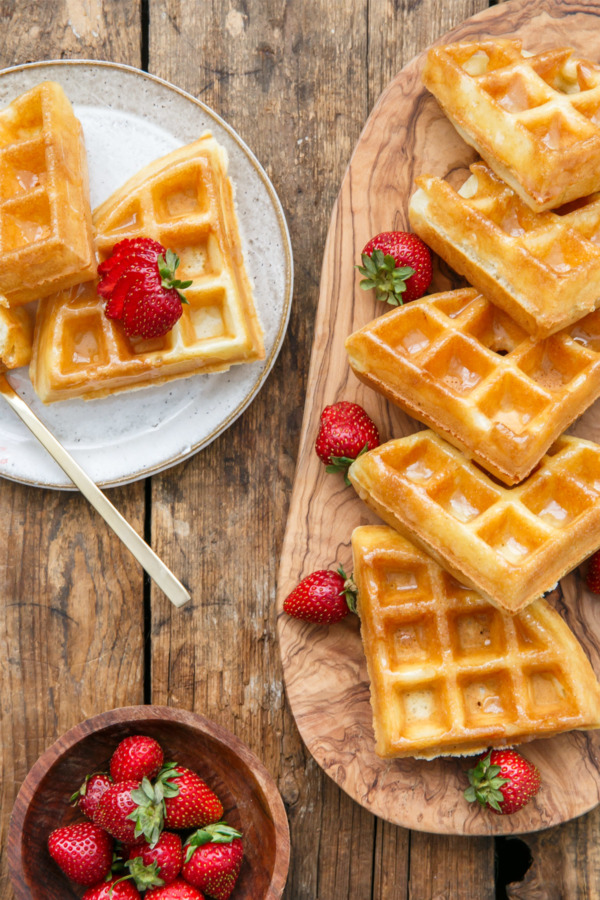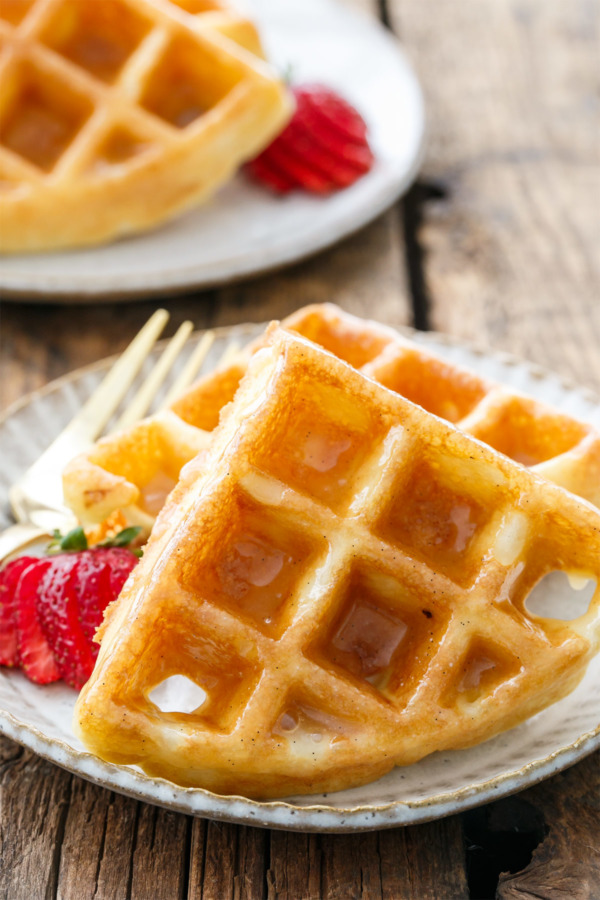These waffles are yeast-raised and donut-glazed. Don’t be phased by the overnight rest, you’ll be amazed at the end result (and praised by all those who try them, they’ll leave your table dazed and waffle crazed). Raised-glazed-unphased-amazed-dazed-crazed. That’s waffle poetry right there.
Actually, the real poetry happens when you take your first bite.
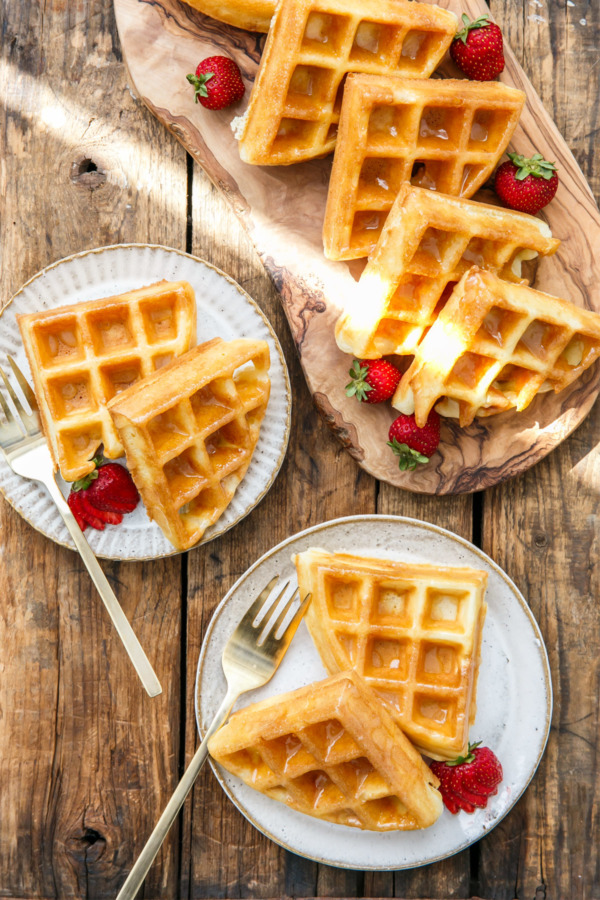
I’ve always been unequivocally on Team Waffle (the only satisfying pancakes in my humble opinion are these German pancakes… because they’re basically French toast). Anyway, for waffle lovers, these yeast-raised Belgian waffles are the holy grail. They’re light and crispy, tender and buttery, and, if that wasn’t good enough, thinly coated with a clear vanilla bean glaze (think Krispy Kreme) that gives the waffles a perfect touch of sweetness. Not to toot my own horn or anything, but they might just be your new favorite waffle (they’re definitely ours).
For those of you on Team Pancake (don’t write these off just yet!) I implore you to take a gamble and break out the waffle iron this weekend. You might just find your allegiances starting to shift… that’s how good these are. If you don’t like them, then you can go back to your beloved pancakes. Just try.
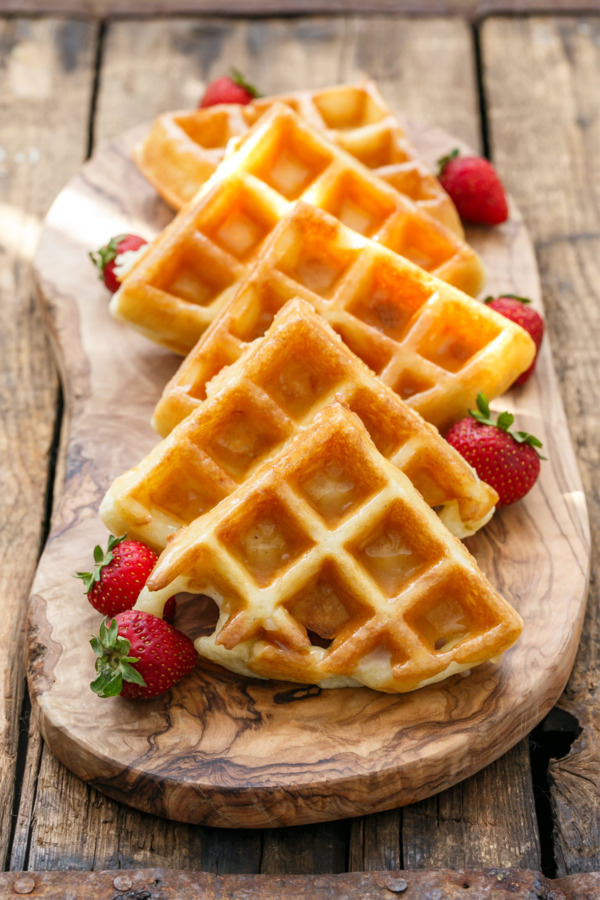
These yeasty waffles were inspired by Jeni Britton Bauer’s iron-born featherlight waffles (yes, that Jeni). Jeni was in Nashville last year for a special brunch event I was lucky enough to attend, and, despite the myriad delicious dishes all the guests brought, her glazed yeast waffles were the star of the show. I wasn’t able to get ahold of her exact recipe, but, via some careful insta-story sleuthing, I learned that she based her recipe off of the yeast waffle recipe in the vintage Fannie Farmer cookbook, but that she whipped her egg whites separately and folded them into the yeast-aged batter. It wasn’t a final recipe, but it was enough to get me started.
Despite my insta-stalking thorough research and testing, my waffles are not identical to hers (I’m missing the vintage cast-iron waffle maker, for one) but I’ll tell you what they are pretty darn fabulous nonetheless. Taylor said they tasted like donuts (which is totally what I was going for, and the fact that he came up with that description without me telling him as much was a pretty good indicator of my success).
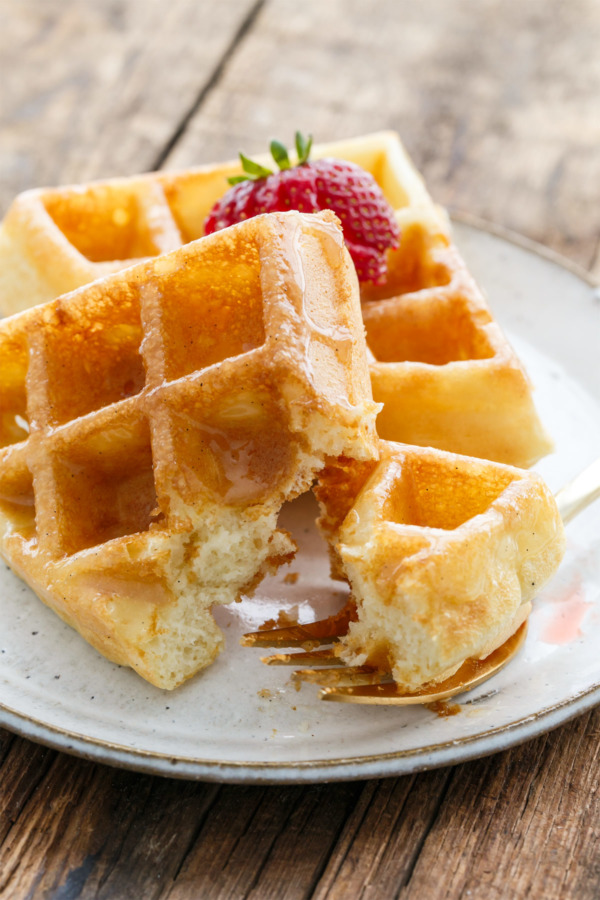
The first batch I made was pretty true to the original Fannie Farmer recipe, with the exception of separating the eggs and whipping the egg whites. The batter seemed awfully runny to me, but I went ahead and baked them up anyway. The result was quite possibly the lightest, airiest waffle I’ve ever had – delicate and crispy and almost lace-like around the edges. To put it simply, they were surreal. I wish I could share the recipe with you, but they were far from practical, so much so that I started to call them the Impossible Waffles.
I determined that the lace-like texture and nearly hollow centers was a result of the thin batter coating both sides of the waffle baker (I use this KitchenAid one which rotates, allowing the liquid batter to coat both sides of the mold). I could not see how this recipe would work in a non-rotating waffle maker, unfortunately; it just didn’t have the structure to support itself, and no one wants a sad half-waffle.
Since I didn’t want to give you a recipe that depended on a specific waffle maker, I decided that those lacey waffles, as good as they were, just weren’t blog material. Sorry! Come over for brunch sometime and I’ll make them for you. :)
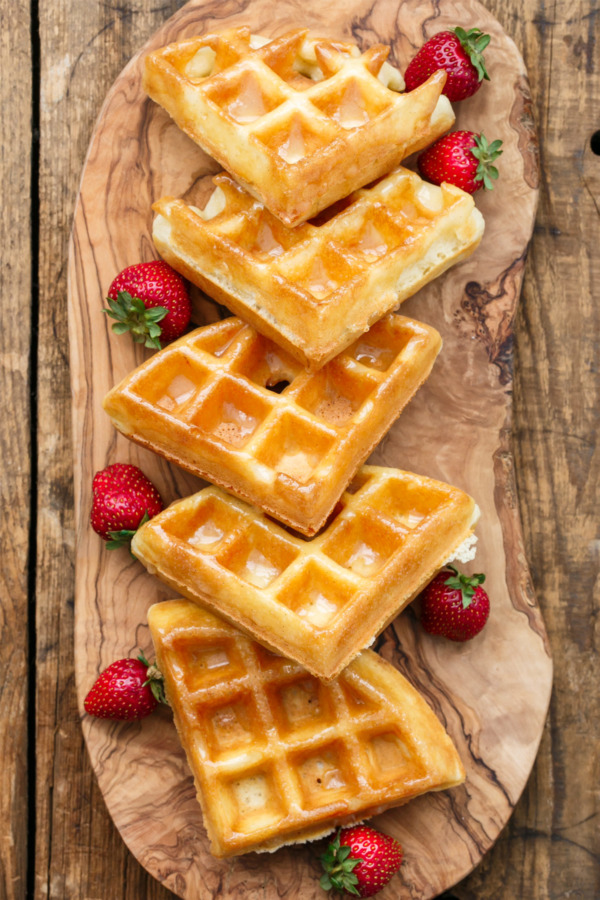
My second attempt, however, was much more practical (and just as delicious in its own right). In other words, entirely Possible Waffles. I thickened up the batter significantly, with more flour and less liquid, plus an extra egg to help give the waffles enough structure and lift to fill the waffle maker of its own accord. They’re still super light and crispy on the edges, but sturdy enough that they don’t fall apart at the merest touch.
Meaning, of course, that they’d hold up to a glaze. A sweet vanilla bean glaze, to be exact, which just reinforces their donuttyness.
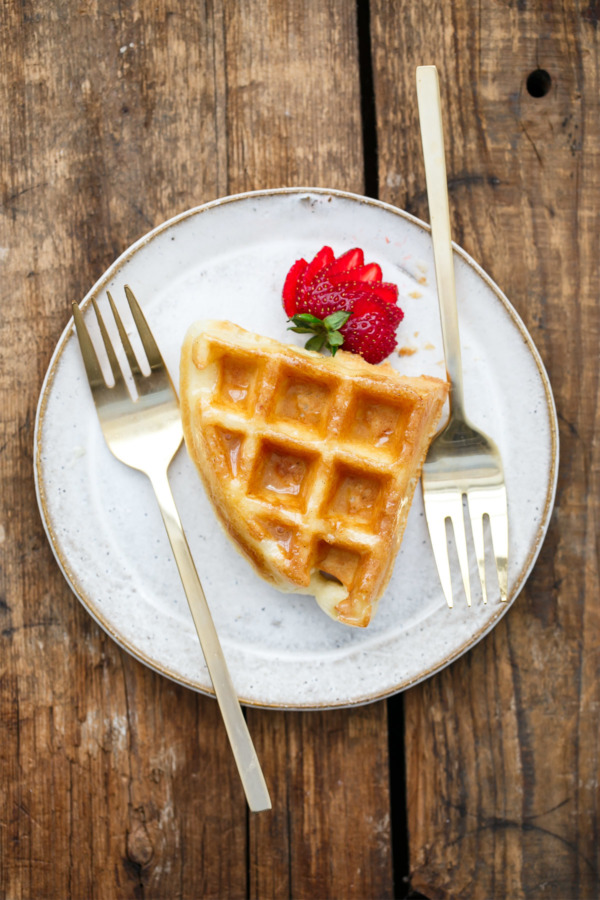
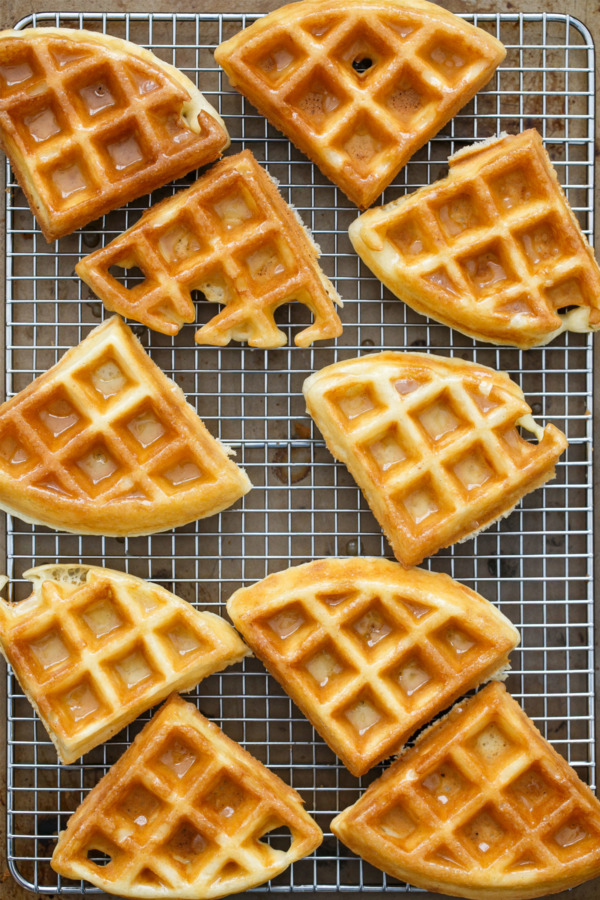
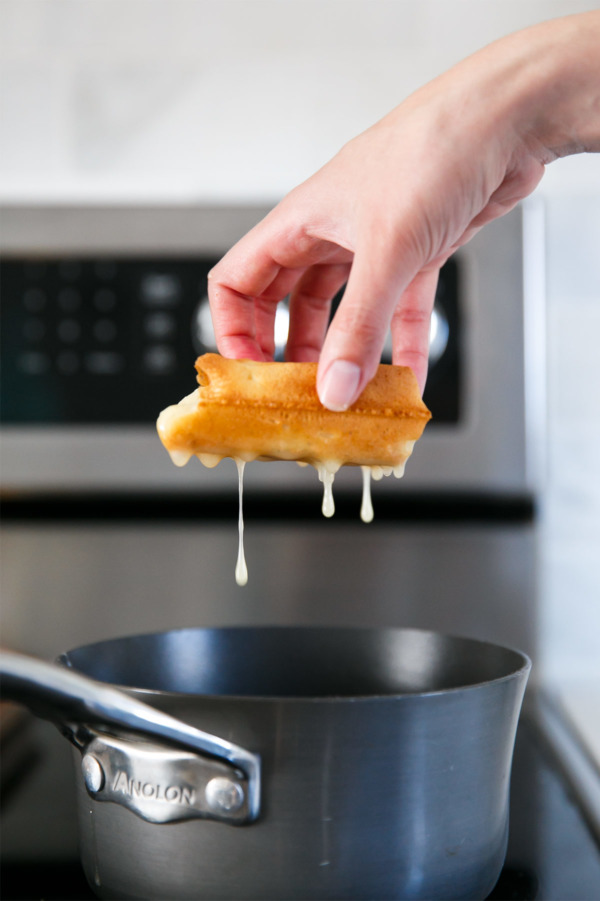
The glaze, of course, is optional. You could skip it and drizzle these with maple syrup instead. However, if you really want to call these donut waffles… the glaze is kind of essential. It’s one of things that makes these waffles so unique and wonderful.
As lovely and simple as the vanilla bean glaze is, I can easily envision a rainbow of flavors, the limits of which are only your imagination. From bittersweet chocolate to blood orange to matcha… you could even make a maple-flavored glaze if you’re the kind of person that can’t imagine waffles without syrup (or if your favorite donut happens to be maple glazed, like mine is, in which case I say go forth and maple it up).
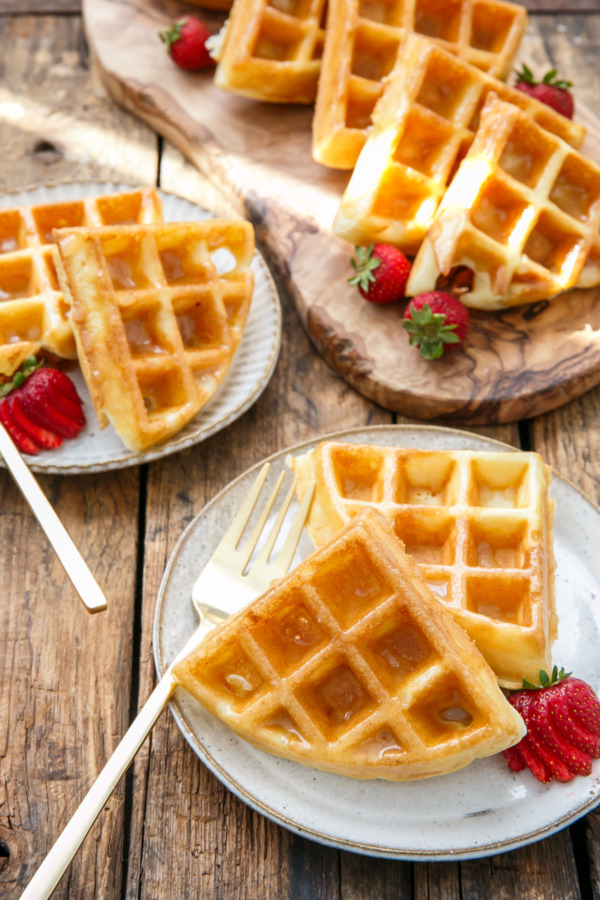
What’s not optional is the overnight rest. Ok, well, technically it could be – you could let these sit an hour or two until they start to bubble and then add the eggs and cook them. But I implore you – give it a rest. Not only will it make your morning far easier (since most of the work is done already), but giving the batter time to rest allows the yeast to do its magic.
There are some yeast waffle fans that insist on leaving the batter out overnight. At room temperature. I’d try it, but my husband is a bit squeamish when it comes to milk and room temperature and all that jazz. So I refrigerated it. But feel free to be brave and leave it out. You’ll be rewarded with an almost sourdough-like flavor.
Also? Feel free to make the batter even two, three days ahead of time (though definitely refrigerate it if you do that). Essentially, the more time the batter sits, the more yeasty goodness will develop and the better your waffles will be.
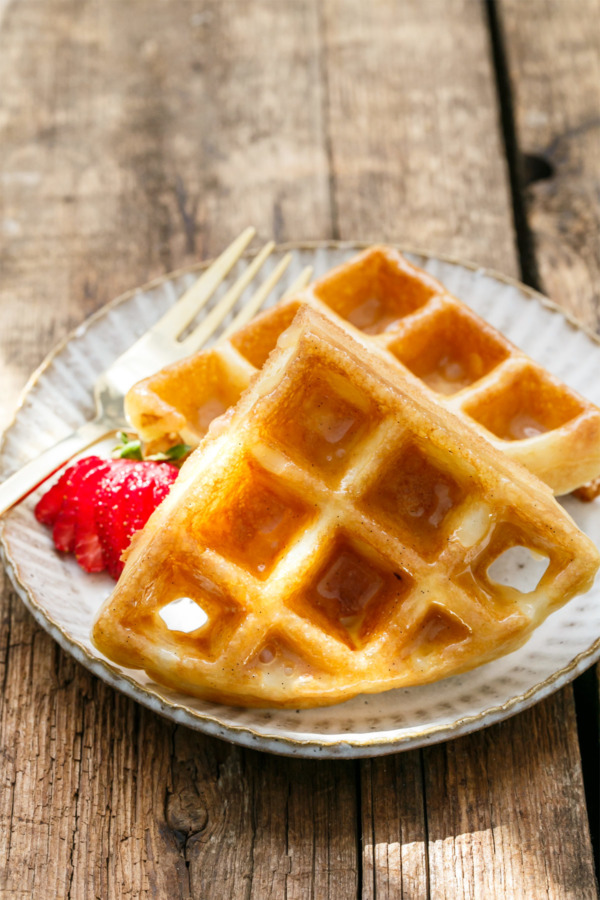
Unlike most waffles, these are best served at room temperature, which makes them a perfect make-ahead brunch recipe. You can have all the waffles baked and glazed and fancifully arranged on a platter before your brunch guests walk through the door. Serve them with a garnish of fresh fruit and some mimosas and you are all set to brunch.
Unglazed, they also freeze beautifully. Thaw and recrisp them in the oven for a few minutes, then cool slightly and glaze prior to serving.
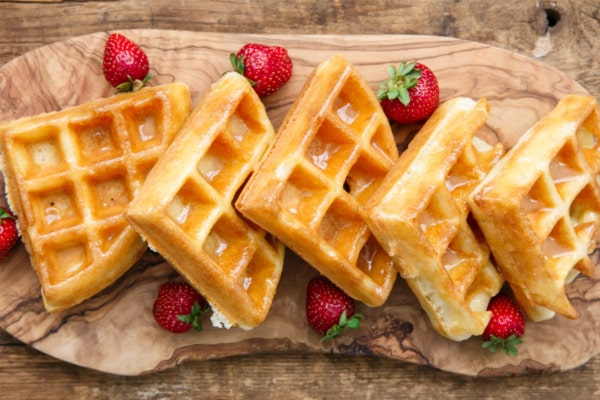
Donut-Glazed Yeasted Waffles
These yeast-raised waffles are crispy on the outside and soft and almost donut-like on the inside, with a thin vanilla glaze (you don’t even need syrup!)
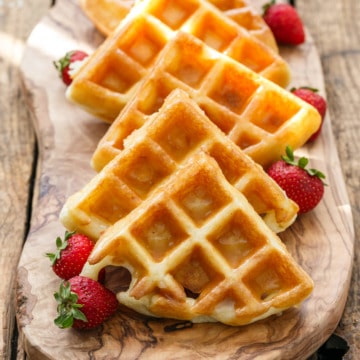
Ingredients:
For Waffles:
- 1 1/2 cup milk milk, lukewarm (approximately 95-105ºF)
- 1 package (2 1/4 teaspoons) active dry yeast
- 2 1/2 cups (10.75 ounce) all purpose flour (preferably bleached*)
- 1 teaspoon kosher salt
- 1 teaspoon granulated sugar
- 1/2 cup unsalted butter, melted and slightly cooled
- 3 large eggs, separated
- 1/2 teaspoon baking soda
For Glaze:
- 1/4 cup unsalted butter, cut into cubes
- 2 tablespoon whole milk
- 1 cup powdered sugar, sifted
- seeds of 1/2 a vanilla bean or 1/2 teaspoon vanilla bean paste or extract
Directions:
- Place warm milk in a large bowl or the bowl of a stand mixer. Sprinkle yeast evenly over top; let sit for 5 minutes. (If using instant yeast, you can skip this step and just whisk the yeast in with the flour).
- In another bowl, whisk flour with salt and sugar until evenly incorporated. Add to bowl with milk along with melted butter; mix to combine and no or very few lumps remain. Cover loosely with plastic wrap and refrigerate for at least 2 hours or overnight.
- About an hour before cooking, remove the bowl from the fridge and let it come to room temperature. Prepare and preheat your Belgian waffle iron according to manufacturer’s instructions.
- Separate eggs; place yolks in a small bowl; whisk with baking soda. Add to dough mixture and stir until mostly incorporated.
- Place egg whites in a large bowl or the bowl of a stand mixer. Beat on medium-high speed until it forms medium-soft peaks. Add half of beaten whites to dough; fold to lighten the mixture. Add remaining egg whites and fold until evenly incorporated and no lumps of egg white remain.
- If necessary, lightly spray hot waffle iron with cooking spray. Add about 1 cup of batter to iron (or whatever amount your particular brand recommends to fill, but not overflow). Close iron and cook until golden brown (mine took 3 minutes 45 seconds using the KitchenAid® Waffle Baker). Carefully remove from iron and place on a wire rack to cool. Repeat with remaining batter (you should have enough for about 5 waffles).
- While waffles are cooling, prepare glaze. Combine butter and milk in a small saucepan set over medium-low heat (use a pan that is just big enough to fit one of your waffle pieces, then you can dip them right in the same pan and not dirty anymore dishes). Gently cook, stirring occasionally, until butter is melted. Add sifted powdered sugar (DO NOT skip the sifting! Trust me… lumpy glaze is no fun) and bring to a simmer for 1 minute. Remove from heat and whisk in vanilla beans.
- Break waffles into quarters (if your waffle iron allows it) as the smaller pieces are easier to dip. Dip one side of waffle into glaze, then lift straight up, allowing any excess glaze to drip back into the pan. Invert and place on cooling rack. Repeat with remaining pieces. Serve freshly dipped waffles at room temperature. While the waffles are best when they are fresh, if you want to make them ahead of time, you can refrigerate or freeze them unglazed, then bring to room temperature (or toast lightly in the oven to re-crisp the outsides) and then glaze them just before serving.
* I used White Lily Bleached AP flour for this recipe. Like in pie crusts, the bleached flour is just slightly less protein and produces a more tender, cake-like waffle. You could also do a blend of regular unbleached AP and cake flour if you wanted to produce a similar result, though I wouldn’t recommend all cake flour (your waffles still need some gluten in there to provide proper support).
Heavily adapted from the Fannie Farmer Cookbook via Epicurious.
All images and text ©Lindsay Landis / Love & Olive OilDid you make this recipe?
Let us know what you think!
Leave a Comment below or share a photo and tag me on Instagram with the hashtag #loveandoliveoil.
